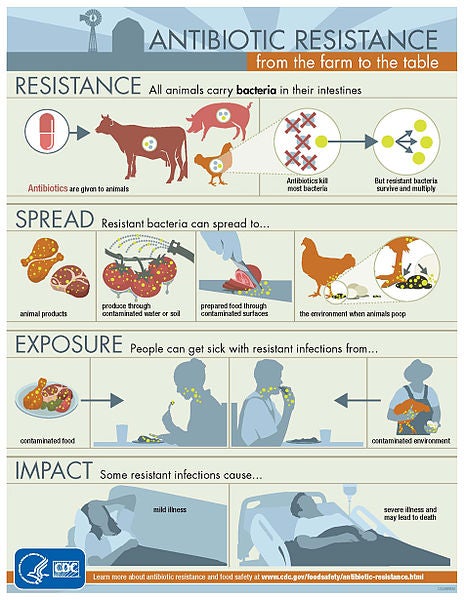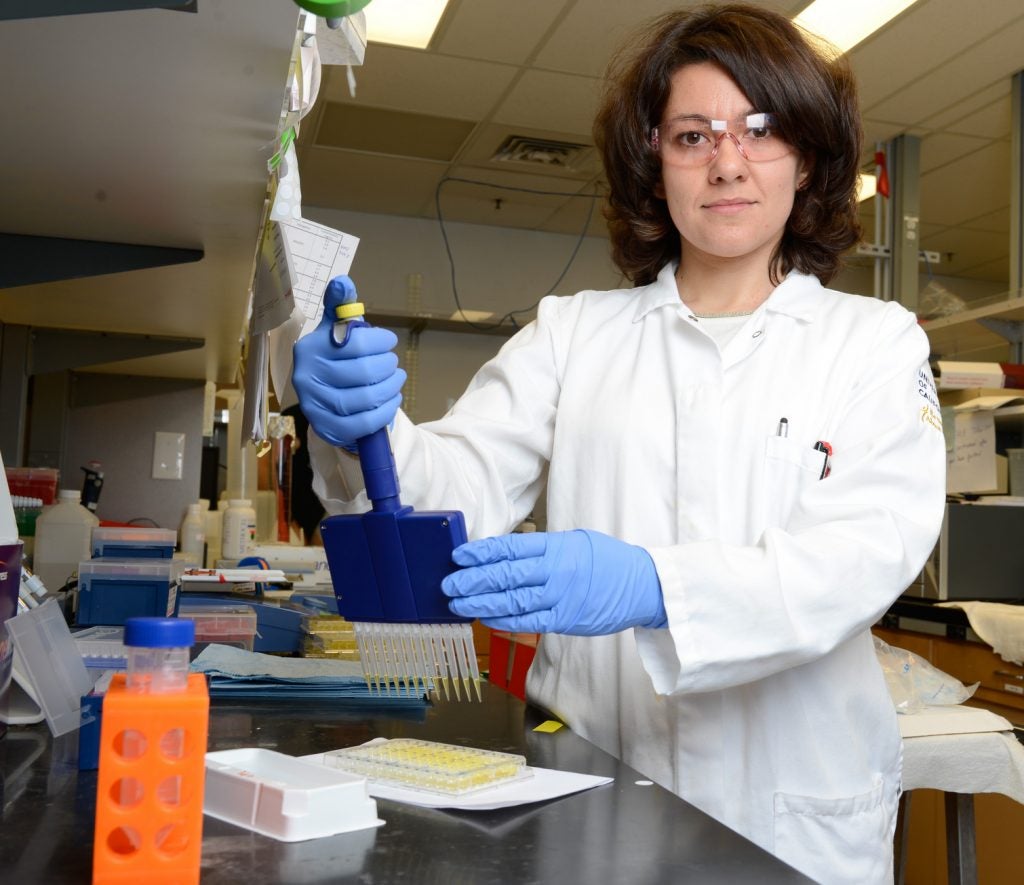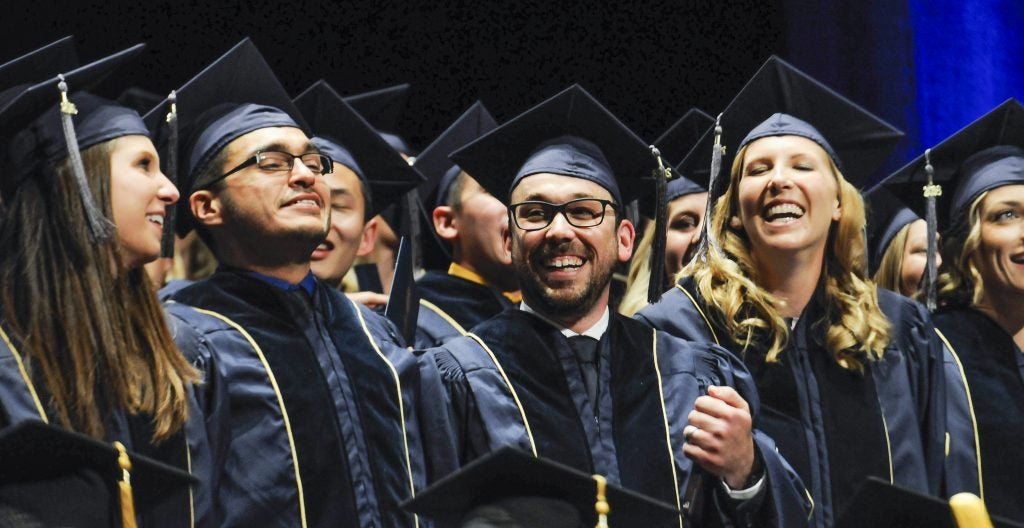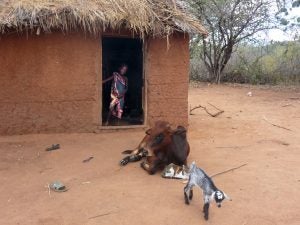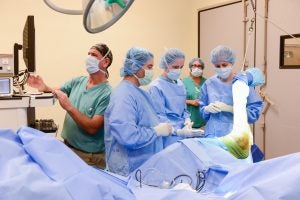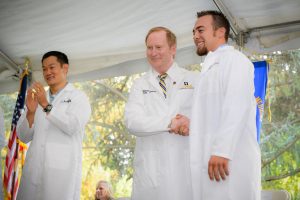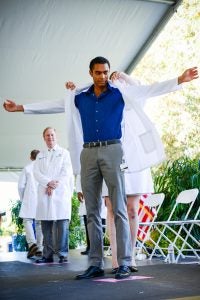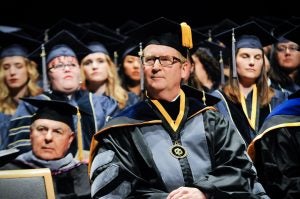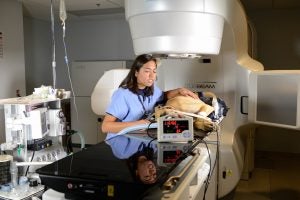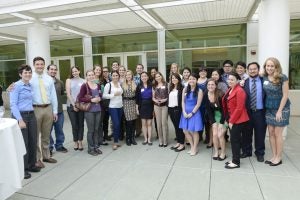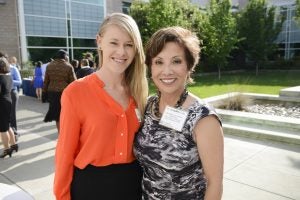“Happiness lies in the joy of achievement and the thrill of creative effort.” – Franklin D. Roosevelt
During our Fall Faculty Reception, we welcome new faculty, honor current faculty achievements and recognize those that provide exception service to our school. In doing so, it is a good time for us to reflect upon how our school has obtained its international reputation as a leader in veterinary medical education and scientific discovery. While we recognize only a few deserving individuals during these events, we are reminded that the creativity and energy of our faculty and volunteers drives us to address societal issues, create new and fundamental knowledge, and educate the next generation of veterinarians and scientists.
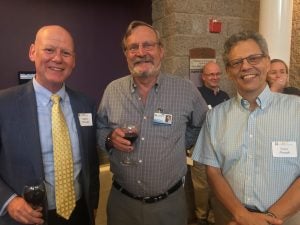
Dr. Andrew T. Maccabe (left), Chief Executive Officer of the AAVMC, visits with Drs. John Pascoe and Isaac Pessah.
Dr. Helen Raybould is honored this year as the Zoetis Excellence in Research Awardee for her outstanding research clarifying the relationship between diet and the gut microbiome, interactions that have been shown to influence obesity and inflammatory responses. Her research has advanced the understanding of inflammatory bowel disease and metabolic disorders, as well as led to the identification of new targets to treat and prevent obesity.


